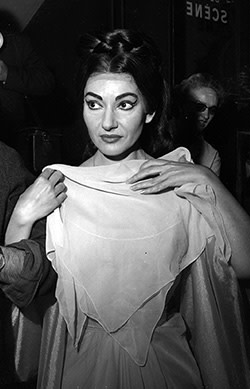Building assets in music manuscripts and instruments beginning to resonate
For collectors, music represents a challenge. It is by nature ephemeral, fleeting; the precious objects associated with it — instruments, manuscripts, autographed black-and-white photographs — are curiously silent, their significance usually evident only with expert training.
Yet where there is passion there are collectors. In the amateur camp, my father owns the autograph of Emil Gilels, a piano virtuoso from Odessa in what is now Ukraine, scribbled in one of my dad’s old Oxford University diaries. He also obtained the signature of Shura Cherkassky, another pianist from Odessa, when he saw him at a concert given by Sviatoslav Richter, perhaps the most famous Soviet pianist of them all, despite Cherkassky’s protestations that my father should solicit Richter’s instead. But that has been lost. My father took better care of his record collection, but mass-produced articles rarely have an investment value.
My husband has taken on my father’s mantle, having picked up a charity shop score of Benjamin Britten’s opera Rape of Lucretia some years ago that included the composer’s signature. But his most prized possession is a double-sided sheet of 15th-century Spanish manuscript with an early form of music notation running alongside gorgeous black and red calligraphy. It came from a dealer in Ohio, via the internet and a specialist framer in the old printing district of Southwark, south London. It is, unusually, music as visual art.

Limited supply is often cited as the key driver of so-called alternative investments. But Nestor Masckauchan of Tamino Autographs, who claims to have the largest inventory of opera and classical music artefacts in the world, running to about 75,000 items, also stresses the importance of demand. He says there are a lot of signed photographs of Maria Callas on the market, yet because Callas is the most famous soprano the opera stage has ever produced they fetch steep prices — typically from $800 to $2,000, depending on the message and condition. “If something is very rare it doesn’t mean it’s very expensive,” he says. “People also have to be interested in it.”
These people range from expert collectors on the hunt for specific items to novices looking for gifts. Masckauchan recently helped a woman with little musical background find a 25th wedding anniversary present for her husband. Knowing he enjoyed the music of Gustav Mahler, she settled on the programme for a concert conducted by the Austrian composer in the early 1900s, an object that typically fetches $300-$500.
“It was a good present; he loved it,” reports the dealer.
But such artefacts may prove harder to sell than more mainstream investments if consumer sentiment weakens. Masckauchan recalls that business suffered in the 2008-09 downturn. “These are items people don’t buy when there’s a recession,” he says.
At the other end of the price scale are the famous stringed instruments made in the workshops of Cremona, northern Italy, in the 17th and early 18th centuries. Christie’s, the auction house, is marketing a private collection of one Stradivari cello and seven violins, including four made by Antonio Stradivari and three by Guarneri del Gesù. The collection is valued at a little more than $60m, partly because all the instruments are associated with famous artists.
The cello, one of only 65 made by Stradivari, spent many years in the possession of the cellist Jacqueline du Pré, who in the 1960s became the popular face of British classical music.
They are not being auctioned but sold by private treaty following a museum-style exhibition. “This is a world where everyone knows everyone and people want the discretion of private sales,” says Paul Cutts, Christie’s global managing director for decorative arts.

The location of the exhibitions in Shanghai and Hong Kong is revealing. The Chi Mei foundation in Taiwan, an offshoot of the Chi Mei petrochemical empire founded by Shi Wen-Long, owns one of the world’s largest collections of fine violins, many of which are loaned to players. Cutts is expecting a philanthropist such as Shi, rather than a musician, to stump up the colossal sums required. “There are still artists who own their instruments but it’s increasingly uncommon,” he says.
The price increases that have pushed these antique instruments beyond the reach of musicians have also made them an excellent investment. The Stradivari Society has calculated that the famous luthier’s violins cost $18,000 on average in 1960, rising to $7m in 2008 — an inflation rate about 10 times higher than that of gold. Cutts claims the market remained robust through the subsequent recession.
Others are less enthusiastic about the high prices commanded by unique items. Lisa Cox, an expert in manuscripts, complains that “it has become almost impossible for ordinary private collections to buy major manuscripts because the Chinese have come in and jigged the market”.
Globalising demand for scarce assets may have made the top tier of the manuscript market, like that for instruments, the preserve of the super-rich. But there are tiers below: printed music by such people as William Byrd, the 16th-century English composer, remains accessible, says Cox.
Those of more modest means can console themselves with the thought that manuscript is the next best thing to music. And music, unlike musical antiques, is not limited by supply.
Comments